What is there to love about Jakarta? That was a question I asked myself when I first moved to the city back in 2008. The city’s traffic has been consistently ranked among the worst in the world for many years. In my first few years in the city, when I was still driving to work, there was one time when the congestion was even worse than usual because it rained earlier in the afternoon. I got stuck for hours in my car trying to get home, and I did everything I could to kill the time – from singing to listening to the radio, snacking, up to one point where I didn’t know what else to do. And then there’s the flooding. The 2007 flood displaced 500,000 people, claimed 80 lives, and cut the access to the main airport. Six years later, another major flood hit the city, inundating the main thoroughfare of Jakarta’s Central Business District (CBD), and even the presidential palace itself.
Home to almost 10 million people – or more than 30 million in the Greater Jakarta area – the city has been facing great challenges and problems from time to time. As the capital of Indonesia – a country with a population of 250 million – Jakarta provides endless opportunities attracting people from all over the archipelago to come to the city and try their luck. Since Indonesia’s independence in 1945, construction in the capital only began in earnest in the early 1960s, in preparation for the 1962 Asian Games which Jakarta hosted. A 120,000-seater Soviet-funded stadium was built, and a large 5-star hotel – designed by a Danish architect – was constructed at the heart of the city. In front of the hotel a concrete monument of a man and a woman perched atop a tall pedestal was added. Facing north – the way foreign athletes and officials arrived from the old Kemayoran Airport – it was then called the Welcome Monument.
Then in 1985, the new Soekarno-Hatta International Airport – located some 20 km away to the northwest of the city center – which was designed by Paul Andreu, the same architect behind Paris’ Charles de Gaulle Airport, began operations. Inspired by Javanese traditional houses, Andreu incorporated tropical gardens and vernacular design in the architecture. Six years later, Terminal 2 was opened, and it has been serving international flights since then.
As the Indonesian economy grew and flight fares became more affordable, demand for air travel dramatically increased in recent years. In 2011, the first phase of Terminal 3 was inaugurated, and five years later the rest of the new terminal was completed. However, unlike the previous two terminals, the new one took a radically different design. Taking a form like most modern airports around the world, it lacks the Indonesian charm the older terminals exude. Ambitiously dubbed as Changi’s competitor in the region, Terminal 3 fell short of expectations even from day one. The day the new terminal began serving passengers, an electric short circuit led to a blackout at night. Several days later, the automatic check-in system went down. Just two days afterward, parts of the arrivals area was flooded following a heavy downpour. Indonesia loves to take Singapore as a benchmark for development, but many things proved to be merely a dream than a reality, including the new airport terminal.
A reputable property developer once dreamed that Jalan Prof. dr. Satrio (a busy street in downtown Jakarta) would rival Singapore’s Orchard Road – a wide avenue lined by glitzy malls and shopping centers, luxury hotels, and leafy trees along its sides. He has opened a big mall filled with a number of South Korean tenants since then, outshining an old all-you-can-get mall, a cheap clothing and fake goods shopping center, and another modern mall down the South Jakartan street. But to make this part of the city a convenient and walkable shopping district, easy access is key. In reality, the traffic on this street during rush hour is arguably among the worst in Jakarta.
Probably part of the reason for this obsession to be like Singapore is the fact that many Indonesians go to the island nation for holiday or shopping. As of last year, there were almost 300 flights serving the Jakarta–Singapore route, making it the busiest international route for both Changi and Jakarta’s Soekarno-Hatta. Business, medical tourism, and education are other main reasons for Indonesians to travel to Singapore. On the other hand, there are more than 20,000 Indonesian migrant workers in the island republic, many of them working as domestic helpers. In Hong Kong, the number is more than 150,000. Instead of going to Jakarta, some Indonesians choose to find jobs abroad to support their families back home. In Jakarta one can find two Hermès stores, as well as that of Louis Vuitton, Gucci, Chanel, Prada, and many other big names in the fashion industry. Even France’s Galeries Lafayette joined the bandwagon and open their first store in Jakarta in 2013. But then, at the other end of the spectrum, there are people who live by the railway, or in densely populated areas, or in dingy houses by the river banks.
Beginning in 2012, when Joko Widodo – formerly the mayor of the Central Javanese city of Solo – was elected as the new governor of Jakarta, the city began undergoing significant improvements. In 2013, the construction of the city’s first ever rapid transit system commenced after more than 20 years on the drawing board. It was initially planned to be completed just ahead of the 2018 Asian Games which Jakarta and the South Sumatran city of Palembang will co-host – a rather ambitious target to achieve. However, in the latest update the first Mass Rapid Transit (MRT) line is slated for completion in 2019, although any further delay won’t surprise me at all. Nevertheless, it is very encouraging to finally see the day when a real metro system is being constructed underneath the city’s congested streets.
Then in 2014, when Jokowi (as Widodo is known in Indonesia) was elected as the president of the country, his deputy governor, Basuki Tjahaja Purnama – known as Ahok – took the helm of the capital. Ahok, who is an ethnic Chinese Christian, was in fact the first non-Muslim governor of Jakarta in almost 50 years. This was seen as remarkable progress for the Muslim-majority city which experienced deadly racial riots targeting its Chinese community back in 1998 following the Asian Financial Crisis. Known for his straightforward and brash-talking style, Ahok brought even further reforms to the city … and lots of enemies.
Under his governorship, Jakarta’s filthy rivers were cleaned up and widened, while illegal squatters along the riverbanks were moved to more humane multistory apartments. This has significantly reduced the flooding in the city during the height of the rainy season. He streamlined the city’s notoriously inefficient bureaucracy and introduced convenient Swedish buses to replace the unreliable Chinese buses which had become the backbone of Jakarta’s bus rapid transit system for years. Healthcare service for the impoverished was also improved to serve as many people in need as possible. He also implemented a new electronic budgeting system, protected by a three-level security password, to fight against rampant corruption.
Suddenly Jakarta experienced a construction boom it had never seen in decades. In addition to the metro system, new roads, flyovers, Light Rail Transit (LRT) lines, and underground passes were springing up, raising a question among the city’s residents why it took so long for Jakarta to see its infrastructure upgraded in such a scale. Ahok’s approach to governing the city was far from conventional, to say the least. By doing so, he alienated the old, corrupt political establishment. Thanks to all of this, his popularity skyrocketed, at one point reaching more than 70% rate of approval. One year prior to the gubernatorial election, it was all but certain for Ahok to secure a landslide victory in the election despite his double-minority status.
However, in the final months of the election campaign, a video of Ahok’s allegedly blasphemous statement against Islam widely circulated on the internet. His contenders, having been desperately using smear campaign to deter Jakartans from voting for Ahok, exploited this unexpected ammunition to turn the tide against the incumbent. The Ahok saga had deeply divided Muslims with influential clerics from both pro- and anti-Ahok camps vehemently defended their stance quoting various verses from the Quran. For sure, social media became an ugly battleground among the grassroots supporters from both sides. To some, the runoff was seen as a struggle of a polite and well-mannered contender against the brazen and arrogant Ahok. But substantively this showed that religion-charged populism that has been sweeping across the globe – affecting places like India, Myanmar, Malaysia and the United States, each to a different extent – claimed another victim. This time it’s Jakarta, the capital of a country that was once dubbed a beacon of democracy and pluralism in the Islamic world.
In a dramatic turn of events, Ahok was charged under Indonesia’s infamous blasphemy law, which according to some reports has an almost 100% conviction rate. Several years earlier the nation’s Constitutional Court had seen a problem with the law and recommended amendments to it – although some believe that the law should be abolished altogether since it is prone to be misused for political and business gains. Pakistan is a grim reminder of what could go really wrong if blasphemy law is abused by those with wicked agendas, as an eye-opening Al Jazeera documentary shows.
Eventually Ahok lost the highly-divisive election, and he was sentenced to two years in prison. Some people cheered, some others were devastated. Ahok was by no means a saint – some of the evictions carried out under his administration were deemed inhumane and criticized by human rights activists. However, it would have been a boon to Indonesian democracy had he lost in the election purely because the other candidates offered better programs, taking racial and religious issues out of the equation. But the intense hatred and enmity throughout the election was a serious backward step for the nation’s democracy – only regained less than 20 years ago following the fall of Suharto, a military dictator who ruled Indonesia for 32 years.
Looking at what happened to Jakarta, Singapore, which experienced deadly racial and religious riots in the 1960s, is probably even more convinced to keep its strict laws in place to maintain peace and stability in the country. The media is virtually controlled by the government, as opposed to Indonesia where a wide array of TV channels and online media outlets – some are owned by influential businessmen cum politicians, some others affiliate themselves with conservative religious groups – with varying views bombard the people with their own agenda. In the latest press freedom index, Indonesia ranked 124, still far from being a free place for the press but significantly better than Singapore at 151.
The election shows that Jakarta is still far from being a progressive and inclusive place where people are judged not by their race or religion, but by their merit. However, despite the demoralizing circumstances, Jakartans should not forget that the city is home to some of the country’s best talents and most creative people, as a video by Monocle suggests. It is home to a vigilante group who abuses religion for their own benefit, but it also hosts Southeast Asia’s wildest nightlife as some people attest. Its annual dance music festival attracts tens of thousands of people, yet it is where the region’s biggest mosque is located. In spite of its large Muslim population, many monuments across the city were inspired by Hindu characters and symbolism. One of the world’s largest Chinese Christian evangelical churches calls the city home, so does a massive Buddhist center located in North Jakarta. The city might never make it to Monocle’s annual Quality of Life index – a list of the world’s 25 most livable cities – which Singapore and Hong Kong always do. In the 2016 list, Singapore and Hong Kong’s ambulance response time, one of the parameters used in the index, were at the average of 11 and 12 minutes, respectively. While in Jakarta it’s 37 minutes. Imagine how many lives could have been saved if the city had a better transportation policy, system and infrastructure!
No city becomes perfect instantly. In fact, no city is perfect. Only if more people voice out their hopes and dreams, spread compassion, nurture empathy, and help each other to make the city home not only for the rich, but also for the poor, not only for the well-connected, but also for ordinary people hailing from all corners of Indonesia and beyond, will Jakarta serve its purpose as a home. Home is a place where everyone should feel safe, peaceful, accepted, meaningful and loved. To make the city home, Jakartans don’t necessarily have to only look up to Singapore or Hong Kong, but also to look into their heart and ask one simple question: “How do I want the city to treat me?”

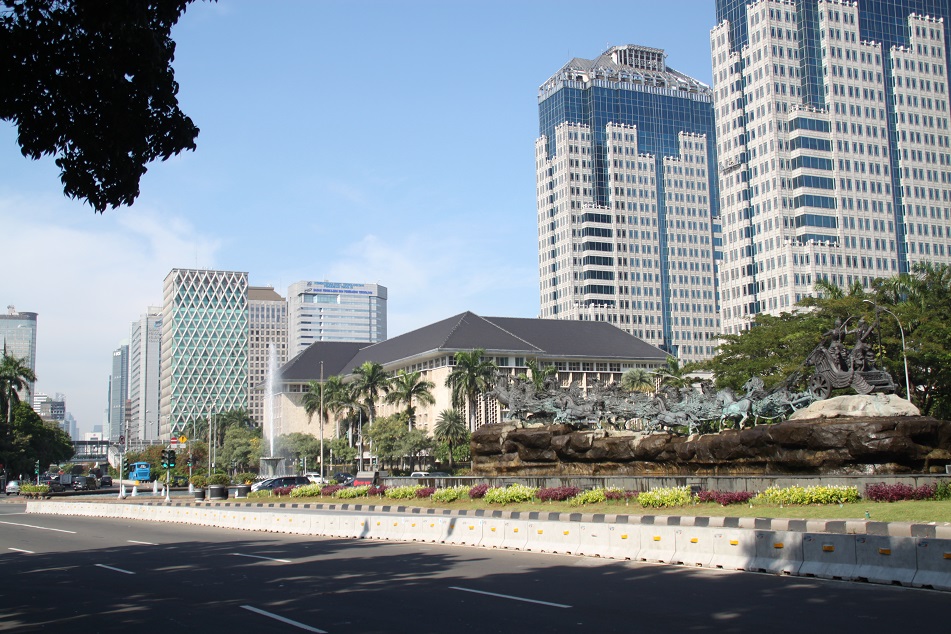


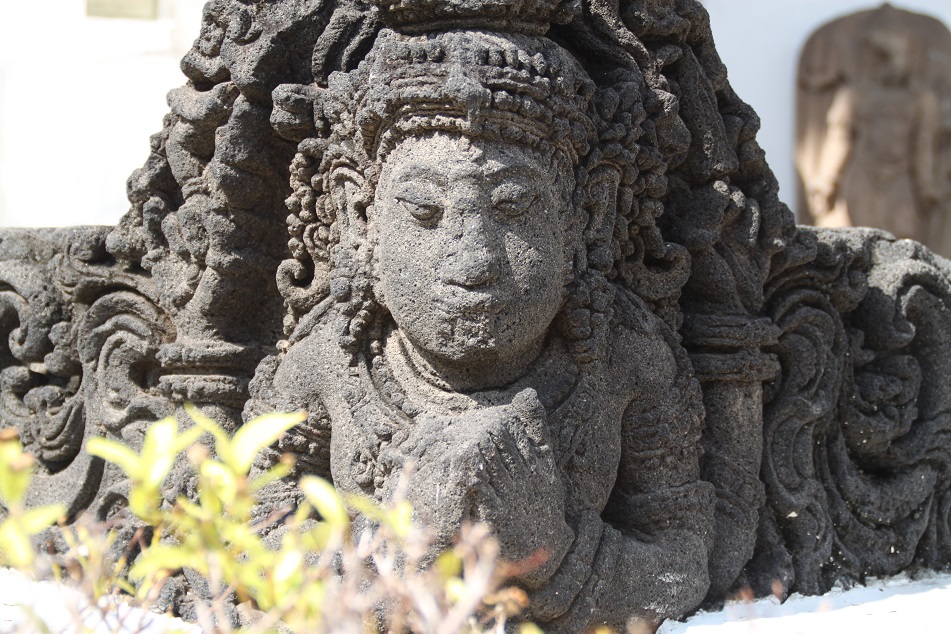




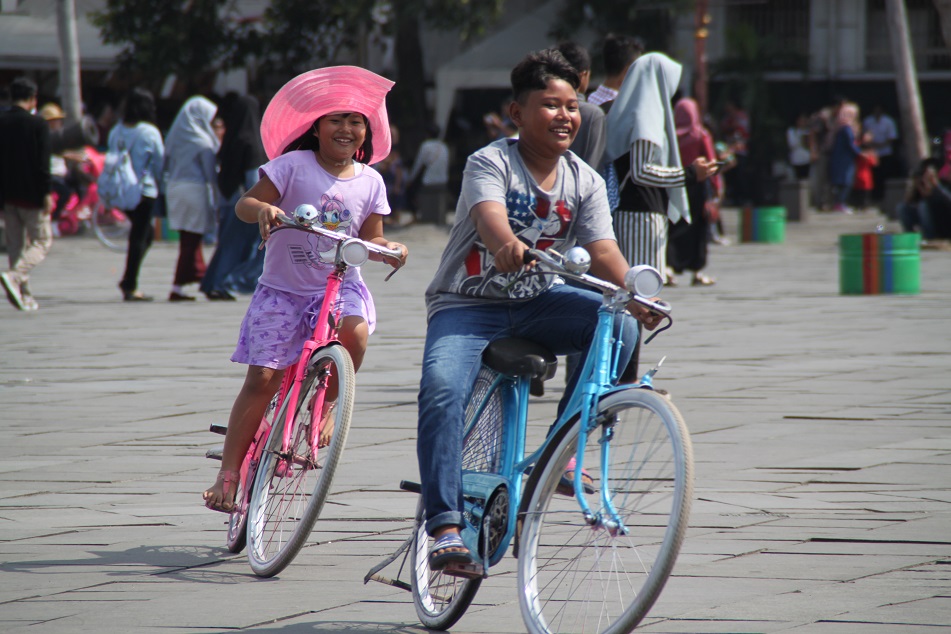


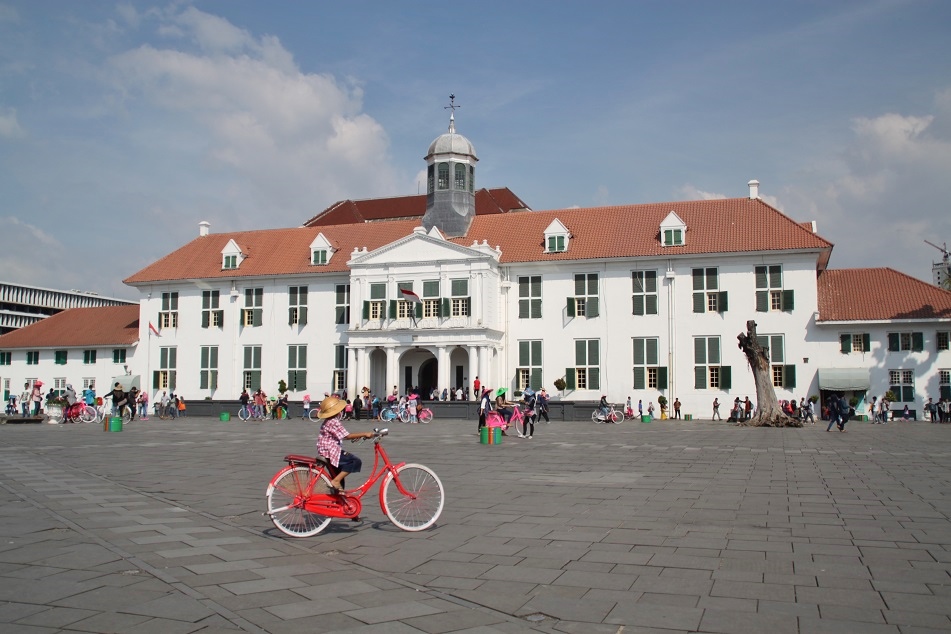
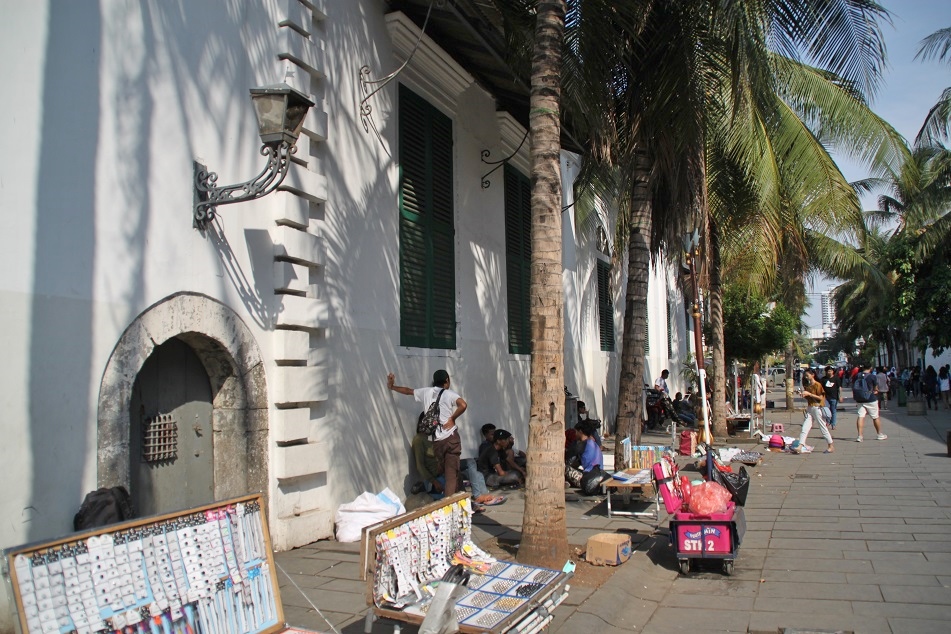
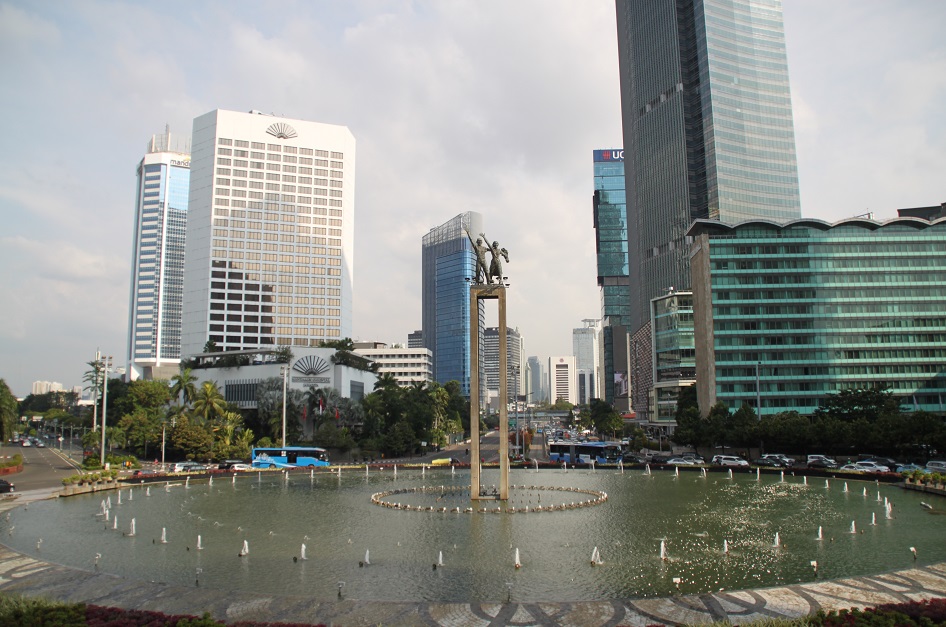


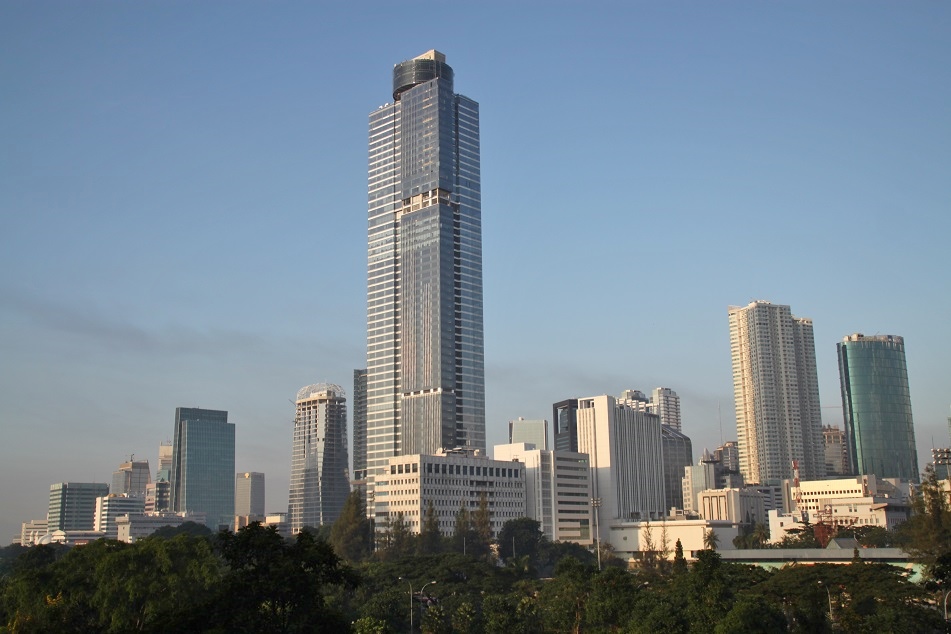

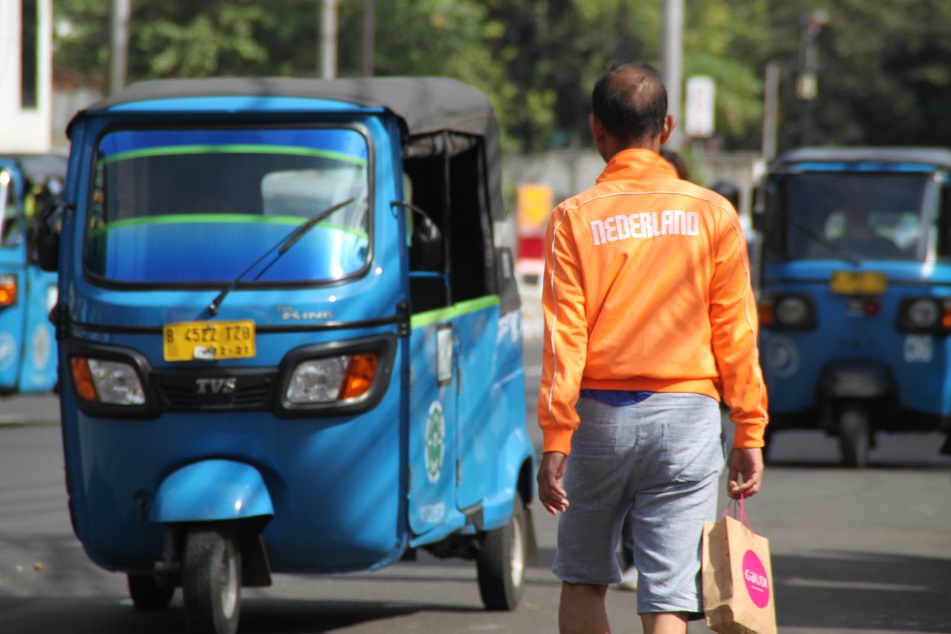
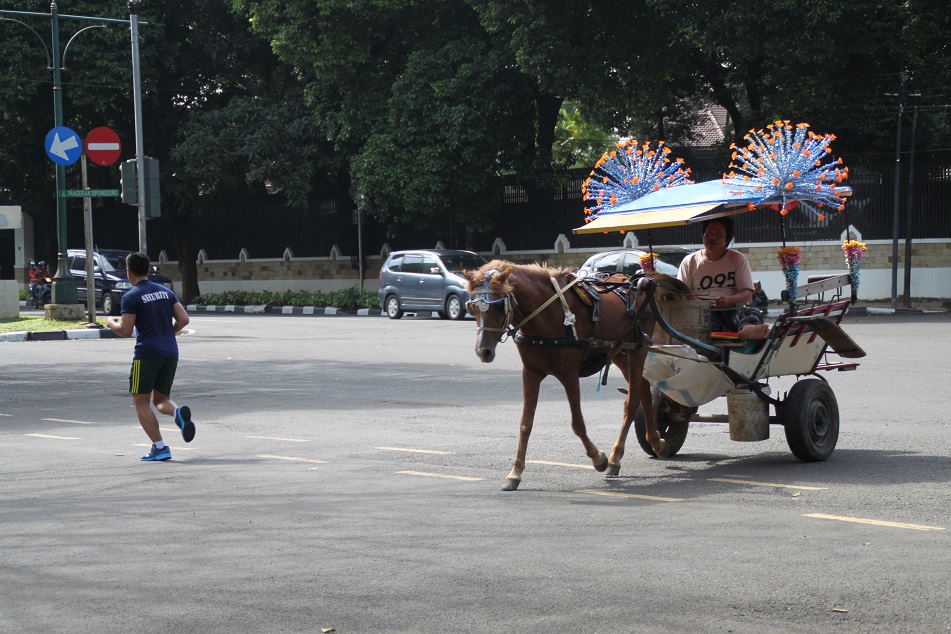
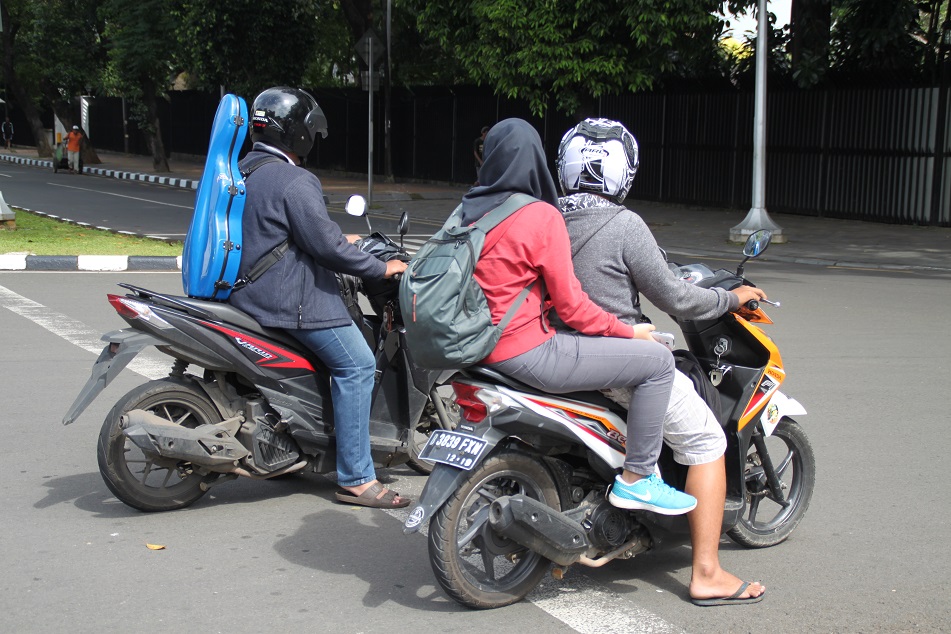
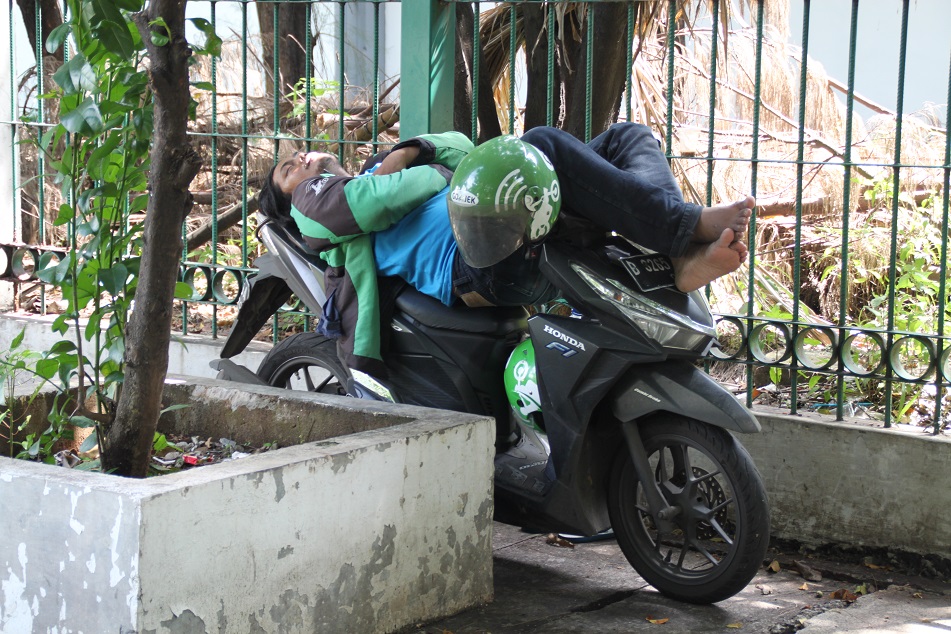




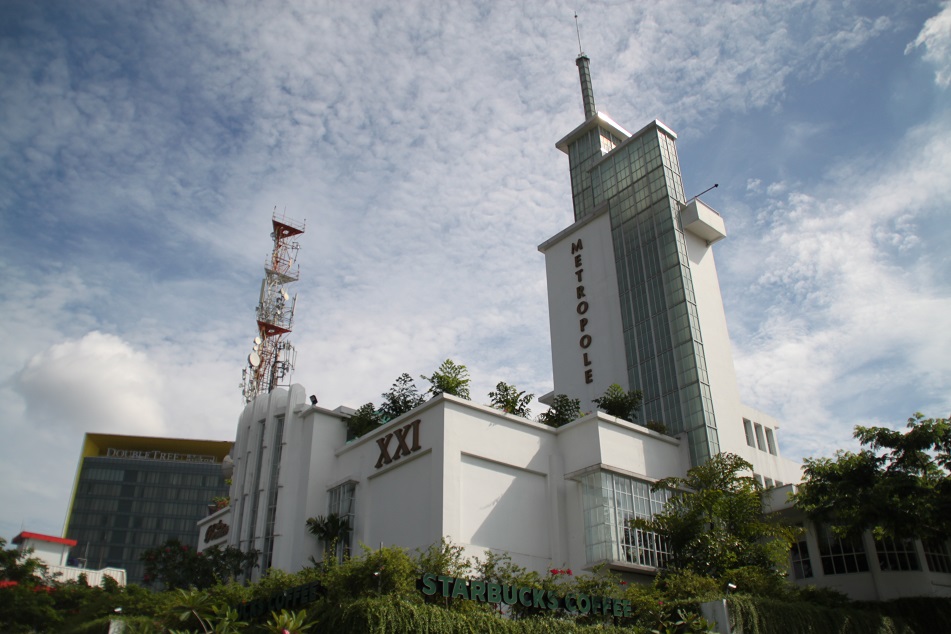
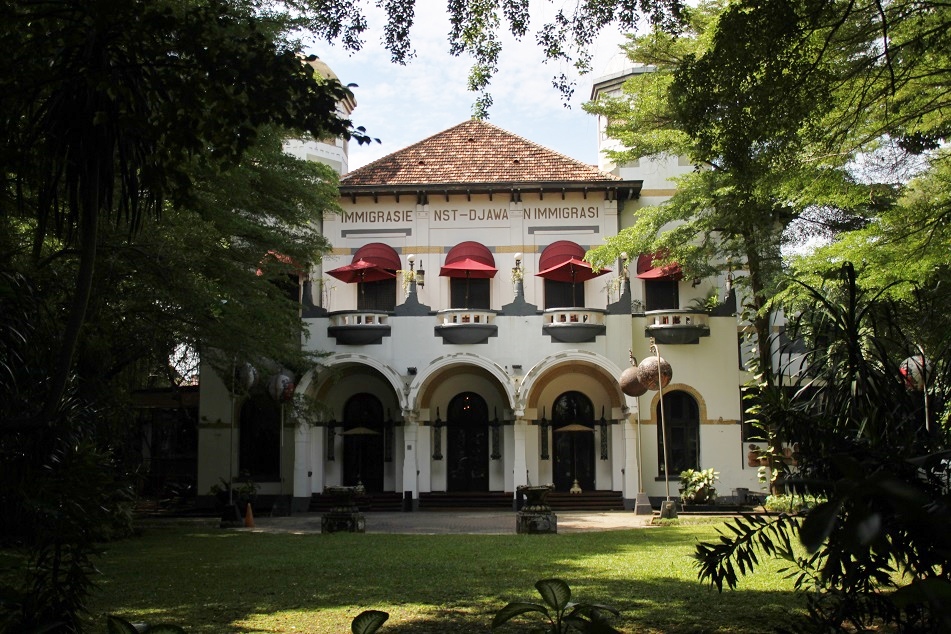
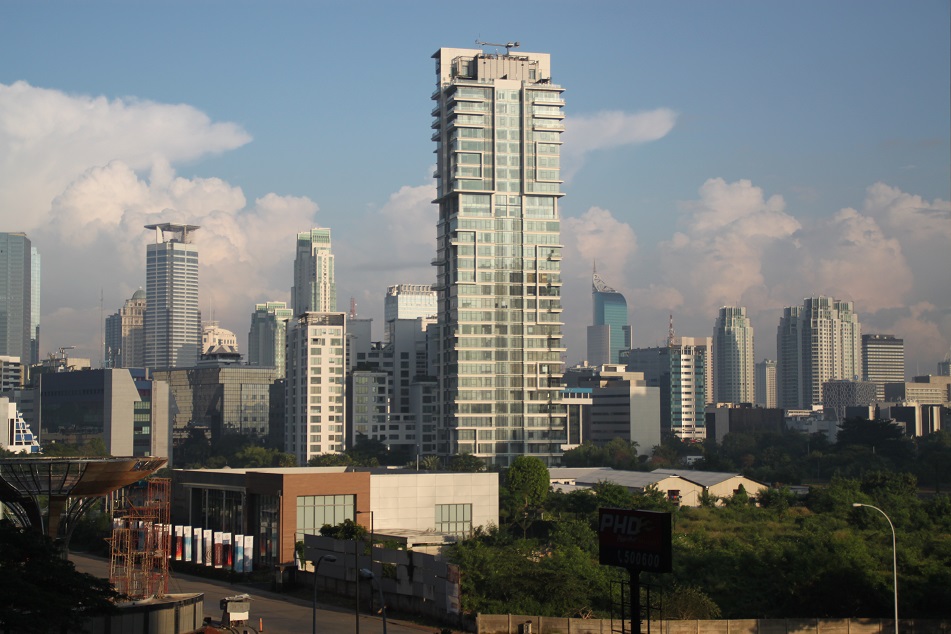
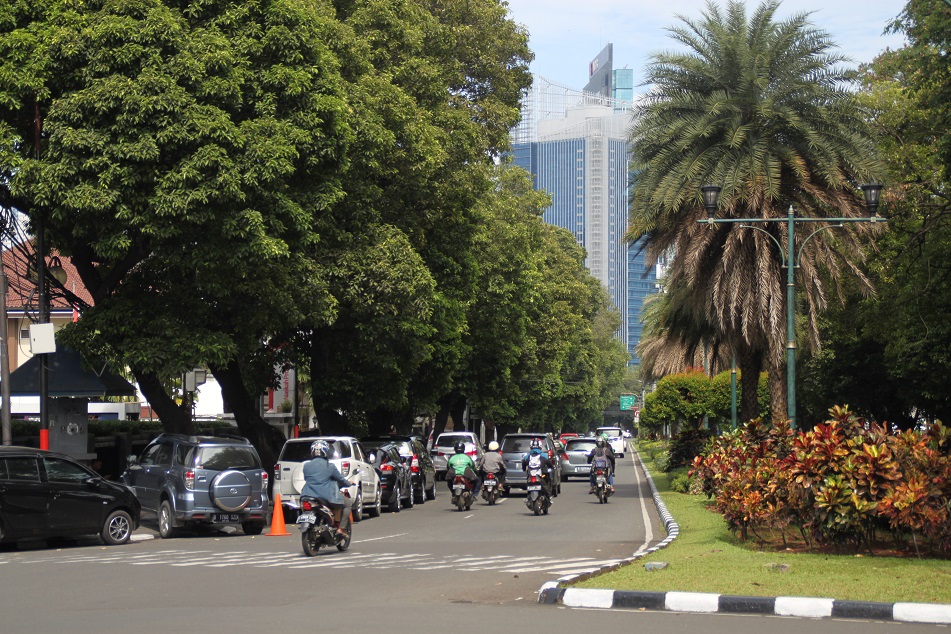


baru tau kalau salah satu arsitek pembangunan bandara itu sama dengan orang yang ada di balik pembangunan bandara di paris. mau jujur atau tidak, ibukota kita ini masih banyak kurangnya dan ketika membicarakan jakarta pasti yang pertama kali diingat ya kejelekannya, macetnya, banjirnya dll. akan tetapi benar, tidak ada kota atau sesuatu yang sempurna tapi banyak juga kota2 di dunia yang bisa dijadikan contoh atau inspirasi dalam membangun dan merencanakan kotanya.
satu yang saya tunggu, bagaimana nantinya penyelenggaraan ASIAN GAMES 2018 setelah sekian lama kembali lagi ke sini, saat opening ceremony kayaknya harus megah, unik, menonjolkan keindonesiaannya heheheh
LikeLike
Tidak ada kota yang sempurna, tapi kita bisa belajar dari banyak kota di dunia untuk berbagai hal. Dalam hal transportasi publik kita bisa belajar dari Hong Kong yang MTR-nya punya reputasi kehandalan yang tinggi. Terkait bagaimana membuat suatu kota lebih ramah terhadap pejalan kaki dan pengendara sepeda, kita bisa belajar kepada kota-kota di Denmark, Swedia atau Belanda. Untuk urusan pengelolaan sampah kita bisa belajar dari kota-kota di Jerman. Untuk mengajari penduduk di Indonesia supaya lebih bisa menghargai pejalan kaki, bisa kita ambil contoh Colombo. Lain lagi untuk belajar bagaimana menekan angka kriminalitas, kita bisa belajar dari kota-kota di Jepang. Itu baru beberapa contoh dari banyak aspek dari manajemen kota.
Mengenai Asian Games 2018, saya juga gak sabar nih pengen nonton upacara pembukaannya. Saya selalu suka nonton upacara pembukaan Olimpiade karena menonjolkan keunikan budaya dan sejarah dari tiap tuan rumah. Pas saya nonton upacara pembukaan SEA Games 2011 saya cukup terkesan karena jujur tadinya ekspektasi saya agak rendah. Tapi ternyata kita mampu menyuguhkan upacara pembukaan yang bagus. Saya jadi ingat, salah satu kenalan saya yang dulu jadi sukarelawan di Thailand sempat kena tilang sama seorang polisi. Begitu tau dia orang Indonesia, polisinya bilang upacara pembukaan SEA Games di Palembang keren, dan alhasil teman saya itu gak jadi ditilang. 🙂
LikeLiked by 1 person
dari pengamatan saya tentang gelaran opening ceremony di dalam dan luar negeri, kalau di kita kayaknya kurang mengakomodir penontonnya, jadi kesannya pasif. beda pas lihat tayangan national day singapore dari tahun ke tahun yang penontonnya seakan ikut berpartisipasi dalam acara, mulai dari memakai lampu2 dll…menunggu di indonesia bisa diterapkan. plus kelemahan kita ya, dukungan pencahayaan yang kurang, tiap lihat stadion2 kita kok ya gelap gitu ya? apa cuma perasaan saya saja.
LikeLike
Saya gak nonton perayaan National Day-nya Singapura, tapi saya jadi keingetan upacara pembukaannya SEA Games 2015 di sana yang menurut saya berpotensi jadi salah satu upacara pembukaan SEA Games terbaik, tapi sayang, hostnya terlalu rame sendiri jadi mengurangi kemegahan acaranya. Soal stadion di Indonesia yang gelap, saya setuju sih. Sepemahaman saya ada bedanya kebutuhan pencahayaan untuk penonton di lokasi dan penonton di rumah, dan ini sering jadi penyebab diskrepansi itu.
LikeLiked by 1 person
iya memang saking banyaknya host-nya jadi brisik banget, hampir tiap tahun nonton kayaknya, di tv sih hehehe
LikeLike
In contrast to the way I picture it, Jakarta looks crisp and clean and modern in all your photos (and somehow you got all of them with very little traffic!). Your explanation of the Ahok years and their aftermath was enlightening to me, someone who tries to follow what’s going on around the world and just can’t keep up everywhere. I can’t defend his comments, but I do admire the things he was able to get done, and I also lament the U-turn away from pluralism that your country has taken (as has ours). Jakarta seems vibrant and lively, in many ways more of a “real” city than its idols, Singapore and Hong Kong!
LikeLike
The truth is I took all the photos on the weekend, hence the seemingly normal traffic. Jakarta itself is a sprawling city, so of course there are parts of the city not covered in this post. But despite all of its imperfections, Jakarta has clearly grown on me. As for Ahok’s case, it’s a wake up call for those who dream of Indonesia as a inclusive place where everyone can live peacefully without having to worry about intimidation from others. It’s a long way to go, but it’s the way to go. Thanks for sharing your thoughts, Lex!
LikeLiked by 3 people
It looks like an absolutely beautiful city. I love the architecture and the streets. What do you use for your photos if I can ask. They all look so crisp and clean with gorgeous composition!
LikeLike
Beautiful is not a word people usually associate with Jakarta, but having been living in the city for nine years I would say that sometimes the city is indeed beautiful. I use a Canon EOS 500D which I have been using for seven years. Thanks for your kind words!
LikeLike
Loved the write up and pictures. I remember reading the past post on HK where I asked you what these three cities of orient are….
I could find India connection in your pictures….Blue Auto-Rickshaw made by an Indian company -TVS!!
Love your pictures. which equipment do you use for photography?
LikeLiked by 1 person
Thanks! Now you know what the third city is. 🙂
In the 1970s, Indonesia imported a lot of Indian-made auto rickshaws which were mostly used in Jakarta. Then at one point, due to the city’s increasing traffic problem, those auto rickshaws were banned from operating at some parts of the capital. Today, however, you can still find the modern version of it at certain areas.
I used a Canon EOS 500D, an old camera which I’ve been using for seven years now.
LikeLiked by 1 person
What a lovely post, I really enjoyed your writing and photos, and to now more about Jakarta 🙂 thanks for sharing
LikeLiked by 1 person
Obrigado Ana! Glad this post gives you a glimpse of the Indonesian capital. Thanks for reading!
LikeLiked by 1 person
Very informative. When I visited the city, I couldn’t wait to get out into the country. Now your article has inspired me to return.
LikeLiked by 1 person
I don’t blame you, Mallee. At times Jakarta can feel very suffocating. But the best things will come your way when you succumb into the rhythm of its cacophony. Thanks for reading and I’m glad this post piqued your interest in giving the city another chance.
LikeLiked by 1 person
Reblogged this on Wag 'n Bietjie.
LikeLiked by 1 person
Very informative. A lot of information that you structured very well. Great photos. What kind of camera do you use?
Keep em coming!
Cheers!
LikeLiked by 1 person
Thanks John and Susan! It took me a long time to write, edit, and re-edit this post because I didn’t want to become too political. I didn’t find Jakarta very welcoming at first. But after nine years living in this city, I actually miss it from time to time, especially when I travel abroad. Speaking of the photos, all were taken by my Canon EOS 500D — a rather old camera now.
LikeLiked by 1 person
This was a great overview of Jakarta Bama. The photos show a bright modern city though I bet there are more gritty crowded areas too. The story of Ahok is a sad testament to the myopic idiocy of self-righteous and power-hungry people seen throughout history, and the world over. Was it ever thus. Too bad because despite his short-comings he sounded like he was good for the city overall.
Alison
LikeLiked by 1 person
Oh yes for sure, Jakarta has its own ‘ugly’ faces. Maybe one day I’ll write a post on them so you and others can get a better perspective about the city. As for Ahok, I think he has done so much for the betterment of Jakarta and its residents, although personally I’m not a fan of his communication style. However, all the hatred directed not only toward him as a person, but also his race and religion was both sickening and worrying. History keeps repeating itself — religion once again is used to manipulate people because many wouldn’t think twice if they are told to do something because their religious leaders say so. Anyway, glad you enjoyed this post, Alison!
LikeLiked by 2 people
Insightful post. I had heard about Ahok just a bit, but your post explains a lot more. I wish we had someone who actually gets things done in Nepal.. the political scenario is just a total tragedy there.
Jakarta looks more modern and clean that I had imagined, but there must be parts of the city which are not the same, like in any other huge city of a developing country. How cool that you’re soon getting MRT, that should ease the traffic jams!
LikeLiked by 1 person
I was in Nepal during the fuel crisis, a man-made disaster which I believe could have been prevented had there been genuine political will from those involved in the debacle.
Indeed, there are parts of Jakarta which are more rough than the rest of the city. But that’s just how a city is, anywhere on the planet, isn’t it? I don’t blame you for having this image of Jakarta as a shabby place, because the truth is the problems this city faces can be overwhelming for those who wish to find practical solutions to those problems. As for the MRT, I really hope the project can be finished on schedule. Jakarta desperately needs it!
Thanks for reading, Pooja!
LikeLiked by 1 person
That’s quite some history out there. We have so much to learn from cities like Jakarta. I wonder how the traffic congestion was solved?
LikeLike
Actually Jakarta hasn’t solved its traffic problem, but steps have been taken to ensure the city is moving to the right direction. Convenient public transport is key, hence the improvements of Transjakarta (Jakarta’s Bus Rapid Transit system), the constructions of MRT and LRT lines, as well as a rail link to the city’s main airport.
LikeLike
Bama I will confess that prior to reading your excellent post I knew very little about Jakarta. Like others have said your photos looks so beautiful. With all those people I was surprised by all of the green. Hoping we can explore it for ourselves one day.
LikeLike
I don’t blame you, Sue. Jakarta was on the news only when there were bombings (especially in early 2000s), riots and flooding. Thanks to these negative publicity, many don’t realize that Jakarta is just like other Southeast Asian cities — thriving and vibrant places which face a multitude of problems every single day. Thanks for your kind words! And speaking of all the green, actually only after I explored the city on weekends did I realize that some parts of Jakarta are greener than many people think.
LikeLiked by 1 person
Nice post. I visited Jakarta on a business trip just a week before the Mayor election. In general, the business people I met – regardless of race or religion – are worried about Ahok losing. Yes, business people tend to be a pragmatic bunch.
Now that he is no longer mayor, I hope the recent progress Jakarta has been experiencing won’t recede into a decline.
LikeLike
On the other hand, there were also business people who wished for the opposite outcome — I guess it depends on whether or not their business would have been affected by Ahok’s re-election. A new governor will take office this October, and all Jakartans certainly hope that he will at least continue some of Ahok’s programs that have been proven to bring benefits for the people. Thanks for reading and sharing your thoughts!
LikeLike
Great insight into a unique city! I would love to visit and you’ve perfectly blended tourist like information with a good modern history of the nation!
LikeLike
Glad you enjoyed this post, Martina. However, mind you that the city has a reputation for making people want to leave as soon as they arrive.
LikeLike
Mate, what an incredible post. This city sounds like an unpolished gem – what it needs is genuine compassion and humanity at the top to give it the status it deserves.
My football team, Liverpool, apparently have a massive fan base in Jakarta. Maybe one day I’ll be out there to take it all in for myself (and hopefully by that point the metro will have opened).
Really enjoy your writing style so I’ve given you a follow. Cheers
LikeLike
Much appreciated, Jamie! It’s true that Jakarta needs people who care about the city, not only about themselves; who are considerate, caring and compassionate; and who have genuinely positive vibes.
Most Indonesians are crazy about football (soccer), and indeed Liverpool has one of the biggest fanbases in the country along with M.U., Chelsea and Arsenal. Spain’s Real Madrid and Barcelona, as well as Italy’s A.C. Milan are also very popular here. Hopefully by the time you come to Jakarta you won’t need to experience the traffic it is currently notorious for.
Thanks for reading, sharing your thoughts, and following my blog!
LikeLike
Fantastic post! When living in Singapore, I never did travel to Jakarta and unfortunately heard a lot of negative comments about the city. But knowing you live there, I’ve always been intrigued by Jakarta because I knew YOU would have a different, more complete story to tell. And here it is! The history is riveting and unfortunate at the same time, with progress forward and backward like so many other parts of the world. In the end, it’s always the people and their hospitality who make a country worth visiting and I’ve had some wonderful experiences in Indonesia. I hope to get to Jakarta someday and enjoy some nasi goreng with you!
LikeLiked by 1 person
Thanks Kelly! I’m not surprised that Jakarta has such a bad reputation in the region. All the bombings in 2000s, major floods, 1998 racial riots, and of course, its perennial traffic jam, all combined would make people think twice before deciding to come to the city. I remember the first time I took a bus to work back in 2008, everyone looked exhausted and unhappy — it was like a cultural shock for me who had been living in friendlier parts of Indonesia. However, as I made new friends, explored the city’s historical quarters, and discovered the best places to eat, I started to see its brighter side. When you do come to Jakarta, I’ll make sure you’ll not only have nasi goreng, but also sate, nasi uduk, and many more dishes from all across Indonesia!
LikeLike
And now, newest update said that the MRT construction at Haji Nawi area has been stopped for a while. Hope that it will be solved soon and the project will begin operation in 2019 as they targeted.
The Skytrain should began the operation this month, but i don’t know, nggak ada kabar apa-apa lagi sampai sekarang.
Meanwhile, Airport Railink memundurkan target operasi sampai September 2017. Please, Jakartans, do support your government project. They are for public facilities, not for some capitalism hotel or shopping malls construction, jadi jangan menghambat dengan masalah pembebasan lahan.
I’m a fans of Ahok. Dan ya, aku terpukul dia dipenjara untuk sesuatu yang tidak dia lakukan.
LikeLike
Fingers crossed, they’ll find the best solution for whatever problem they’re facing so by 2019 Jakarta can see its first MRT trains up and running for real. Any delay is acceptable if the reason is to ensure everything runs safely and smoothly. As for Ahok, what really disturbed me was the amount of hatred that surfaced during those mentally-exhausting months leading to the gubernatorial election. Not only was the rhetoric divisive, but also appalling.
LikeLiked by 1 person
I’ve never thought Jakarta would look like that! I’m very surprised! It was very interesting to read about why it looks like Singapore as well.
LikeLike
Either they’re inspired by Singapore and Hong Kong, or it’s similar to what happened to European cities which saw the constructions of impressive palaces, cathedrals and gentrified gardens centuries ago, but I feel that many Asian cities are moving toward the same direction — with different results. Some cities, like Bangkok, are doing relatively well in preserving their traditional architecture while at the same time embracing modernity. Thanks for reading!
LikeLike
Unlike what’s said in the beginning of the post and written elsewhere, you pictures tell me Jakarta’s has fine roads and pleasant traffic. Clean and green lanes; can’t believe this place is flood-prone
LikeLike
The traffic looks pleasant because I took the photos on the weekend. I guess I should have included one or two shots of workdays traffic for people to compare. 🙂 However, when I moved to the city it did surprise me as well to find parts of Jakarta that were green and leafy. Thanks for reading, Sreejith!
LikeLiked by 1 person
Very, very nice indeed! I know of Jakarta and the fact that it’s a crowded and highly political city which I haven’t had the slightest desire to visit, BUT, I really enjoyed reading more about the background to what, and how, it became the city it is today.
Very nice photographs of normal Jakartan life too.
LikeLike
It is actually very rational to avoid Jakarta altogether and go straight to the islands, ancient temples, volcanoes, and all those place across Indonesia if you only have limited time in the country. However, one day or two on the weekend in the capital would give you a glimpse of the energy that makes the city exciting in its own way. Thanks for sharing your thoughts, Victoria!
LikeLiked by 1 person
Is it ok for you, if you show sympathy to the former mayor on this blog? After what he has done to Jakarta, I think they should pardon him. Now I understand why he is highly popular among young people. He represents progressive, but it seems the system (or at least his enemies) dislike that. I think this is a real political witch hunt and the “religion” card once again seems very effective.
LikeLike
One of the main purposes for me to write this post was to bring the awareness that mixing religion with politics will only do more harm than good, as has been proven over the course of millennia. I do hope that what Ahok has done to the city inspires more people to contribute whatever they can do, take part in any good cause, and safeguard the city’s move forward.
LikeLike
Such an amazing piece of information! Love the bicycles in there. Cute ones…
LikeLike
Glad you enjoyed this post! Those colorful bicycles are actually for rent, and they have been a part of the Old Town’s tourist attraction for years now.
LikeLiked by 1 person
It’s wonderful how people value and preserve their tradition. Wanna pose with one of those some day 🙂
LikeLike
Thanks to the Dutch, bicycles have been a part of life for most Indonesians, until recently when motorbikes become cheaper.
LikeLiked by 1 person
Bicycles are a great way of navigating the toughest lanes. In Mumbai, they’ve almost disappeared, except for the fitness enthusiasts. But, those are the racer kinds. These Indonesian ones are a lot cuter 🙂
LikeLike
In many big cities across Asia unfortunately bicycles are fast disappearing. Hopefully there will be a resurgence of people’s interest in cycling, not only for the sake of their health, but also for a cleaner air.
LikeLike
Sigh!!! Our countries really do share so much in common. And not all good. At the moment we just might be ahead in the bigotry department.
Great post Bama. And a thought provoking closing sentence. A question every world citizen should ask oneself. My vision of Jakarta will always be coloured by the fact that you and James love it so much. Look forward to exploring it with you guys someday soon.
LikeLike
I know! Whenever I read the news about India, I can’t help but compare how things are going in our countries. Sometimes I feel like the fight against bigotry and hatred would be a really long one with no silver lining to be seen. But some other times it is really heartening when places like Semarang, my own hometown, stood up against radical groups. It shows that there is still hope.
The tension in Jakarta has pretty much subsided now, and I guess it’s time for me and James to further explore the city, so when you come we’ll have a long list of places to take you. 🙂 Really appreciate your thoughts, Madhu!
LikeLike
I recently read about a travel journalist who fell in love with Lebanon and ended up staying for almost two decades (he’s still there) – he once wrote on Instagram that Beirut is a city he “loves without reason”. Sometimes I feel that way about Jakarta. The past year or so has certainly been a roller-coaster ride, especially with the awful politics of hatred that you mentioned here. But just when I get fed up with all the maddening traits and aspects I find something that is fabulous and redemptive about Jakarta. Maybe it’s high time I summed up all those thoughts and experiences in a post of my own. 🙂
LikeLike
Unconditional love certainly will keep one going much longer than loving with reasons. In Jakarta, if you meet the ‘right’ people, you’ll feel really optimistic about the city — and the country in general. You meet the ‘wrong’ people, all you want is to leave the city altogether. You definitely should write about your experiences living in Jakarta, James. It’s been more than a year since you moved here, so many stories to tell.
LikeLiked by 1 person
Pingback: Semarang: My Cherished Hometown | What an Amazing World!
I love Jakarta!
LikeLike
“Love” is not the word most people think or feel toward Jakarta. 🙂 Thanks for dropping by!
LikeLike
Yupz, I agree with you! You r welcome..
LikeLike
Pingback: Javanese Royal Palaces: Surakarta | What an Amazing World!
Pingback: Blitar under the Radar | What an Amazing World!
Pingback: 10 Years in Jakarta | What an Amazing World!
Pingback: 10 Years in Jakarta | What an Amazing World!
Pingback: Embracing the Southern Lifestyle | What an Amazing World!